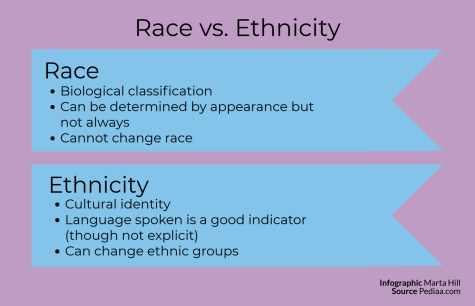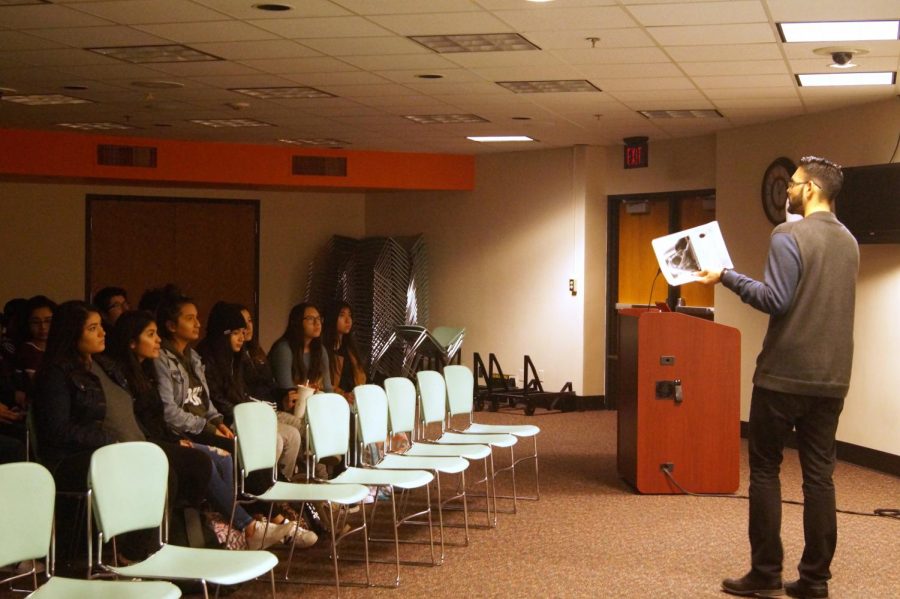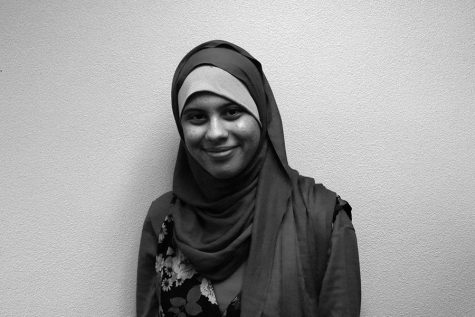Latino association club discusses Hispanic identity
Members expand perspectives
Club advisor Mr. Perez starts the meeting out with an announcement on an youth-related opportunity within Park. The Latino Club meeting was held on Dec. 15 in room C350.
December 17, 2017
On Dec 15, members in the Latino Association club took part in a collaborative group conversation in regards to how Latinos and Hispanics are able to express themselves fully in a world full of racial and ethnic tension.
The topic discussion on Hispanic identity started with a spoken word video in The New York Times’ A Conversation With Latinos on Race video.
Freshman Kristi Thompson said she relates to some of their perspectives because she understands the struggle of fitting in as a Latina through different skin tones
“I get a lot of white privilege because of how I look, and how in (the) Hispanic community, I get called ‘good enough,’ which means American and very white, so I kind of get the best of being white,” Thompson said.
According to Latino Association club adviser Daniel Perez, when it comes to learning about racism in Hispanic and Latino cultures, discrimination is more focused on skin color rather than ethnicity.
“What I do know as a person who lived in Mexico, we don’t necessarily call it racism, but there is this other term. We call it colorism, and it’s dependent on hue of skin color,” Perez said. “It’s a lot more intermixed with class. That’s my limited understanding as of today.”
Thompson said after watching the video, she understood more about herself and the Hispanic culture as a whole.
“I thought they were very informational, and they showed how other people feel and gives you (an) inside on what it’s like to be Hispanic,” Thompson said.
Perez said he decided to share the video because he wanted students in the club to feel content about themselves and be confident in who they are.
“They should embrace who they are (and) start getting a clearer definition of who they are,” Perez said. “They (should) feel comfortable utilizing terms that define them according to who they think they are as opposed to letting society define who they should be.”
Thompson said stigmas between race and ethnicity could be solved if people initiated conversations about each other’s identities and personalities.
“Just ask. There’s nothing wrong with ‘hey, where are you from?’ ‘I’m from this,’ and just by saying that, you open up a conversation, and you really get to know someone better from that,” Thompson said.
Perez said it is difficult to discuss race and ethnicity, but having the opportunity to learn about it in an educational setting helps veer away from misunderstandings.
“To sum it up in simple terms, race is typically described as this construct about skin color. It is deeper than that, but on a superficial level it is tied to skin color. Ethnicity is tied more to cultural practices, language and ways of life,” Perez said.
The next club meeting date is still to be determined.





